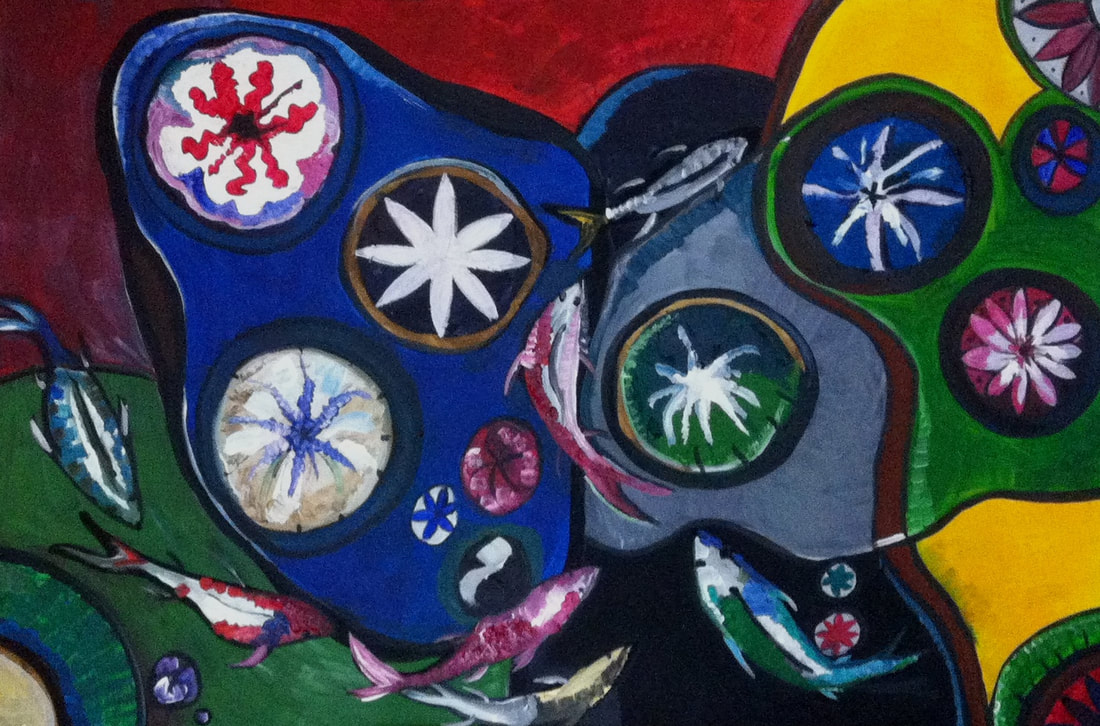Personal perspectives on constructivism in a high school art class by James Francis Hesser3/23/2023 Personal perspectives on constructivism in a high school art class by James Francis Hesser * This post is related a note after reading the article, "Personal perspectives on constructivism in a high school art class by James Francis Hesser".
- To help students discover the value and power of art making so they can use it in their lives. -Recently, I surveyed my students about the painting unit they just completed. Several comments indicated that students felt there were not enough opportunities to "draw what [they] wanted". These answers made me rethink my classroom. Students seemed to prefer the projects that gave them the most creative control. So why not give it to them? My research explored what happened when I did. -Cognitive psychologists such as Piaget and Vygotsky have developed learning theories that support Dewey's philosophical premises. Piaget clarified the need for context in learning, proposing the theory that learning is based on experience that follows cognitive development and challenges concepts understood from previous experience (Foote, et al., 2001; Marlowe & Page, 2005; Piaget & Inhelder, 1966/2000). . Like Piaget, Vygotsky (1978) linked learning to challenging prior experiences, but believed that learning led rather than followed cognitive development. Vygotsky also added a key element to the mix: social interaction. Vygotsky described learning as a social process in which knowledge is constructed through interactions with knowledgeable mentors and peers. These ideas form the basis of social constructivism." - There are three questions in the survey. (1) Why do you make art? (2) What do you want to make art about? (3) ) What do you use to create art? Surveys have shown that most students do art to express their feelings, interests, or experiences, and drawing is particularly expressive, but not many opportunities to draw. - The facilitator explored tempera, charcoal drawing, compositional forms and observational painting of Cubism. -Giving students opportunities to work with new pictorial mediums and developing skills for students. Authors include vanitas paintings, self-portraits, self-portraits, We created unit structures inspired by skeletal constructivism that began by exploring thematic content in dramatic painting. Using both collaborative and individual work, students have constructed and completed individual acrylic paintings of various dimensions that explore themes and ideas of personal interest. Students were required to include at least one rendered object from Observation in their drawing. In the process, students build skills in color theory, composition, acrylic painting techniques, and visual metaphor composition. Once the class started, I was immediately confronted with one of the most consistent criticisms of constructivist education: the difficulty of classroom management. people study -By the time students were working in groups of three and planning the content and organization of their drawings, they took on greater responsibility for their learning and actions. -In the process of asking a question, students made important discoveries about themselves, how they work, how they think, what their peers think, and what it takes to be a good leader. Throughout the unit, I was constantly reminded that "at the heart of the constructivist approach... is the understanding that students have control over their own learning" (Milbrandt et al., 2004, p. 20). Vygotsky (1978) believed that students' learning depended on their area of proximal development, that is, their ability to solve problems beyond their actual developmental level under the guidance of a more knowledgeable adult or mentor. -Questionable learning outcomes and abandonment of curriculum standards are among the criticisms of constructivism (Foote, et al., 2001). However, this unit allowed students to learn about art movements, literary devices, color theory, anatomy, drawing and painting techniques, world cultures, and other topics important to a thorough art education. Critical, high-level thinking is inherent in effective art-making, and constructivist frameworks can increase the opportunities for this thinking to occur. -Constructivist theory requires students to be involved in all phases of the learning process, from planning to assessment (Hochtritt, Lane, & Bell Price, 2004; Milbrandt et al., 2004; Prater, 2001). Teachers as facilitators also evaluate, but mostly help students evaluate themselves and contribute to setting evaluation criteria and processes. - Despite its imperfections, this unit clearly challenged most students. Many have created inspired works that call for improved painting techniques and the development of new ways to communicate ideas. It will be helpful to explore different methods of assessing collaboration, especially in large class sizes, and different ways to balance independence and collaboration in the creative process. Constructivist learning is a dynamic process that must be skillfully facilitated. Facilitating learning requires sensitivity and flexibility. It is not mastered overnight by teachers and students. But it's worth the effort.
0 Comments
Leave a Reply. |
Myungja Anna KohArtist Categories
All
Archives
July 2024
|
Proudly powered by Weebly


 RSS Feed
RSS Feed